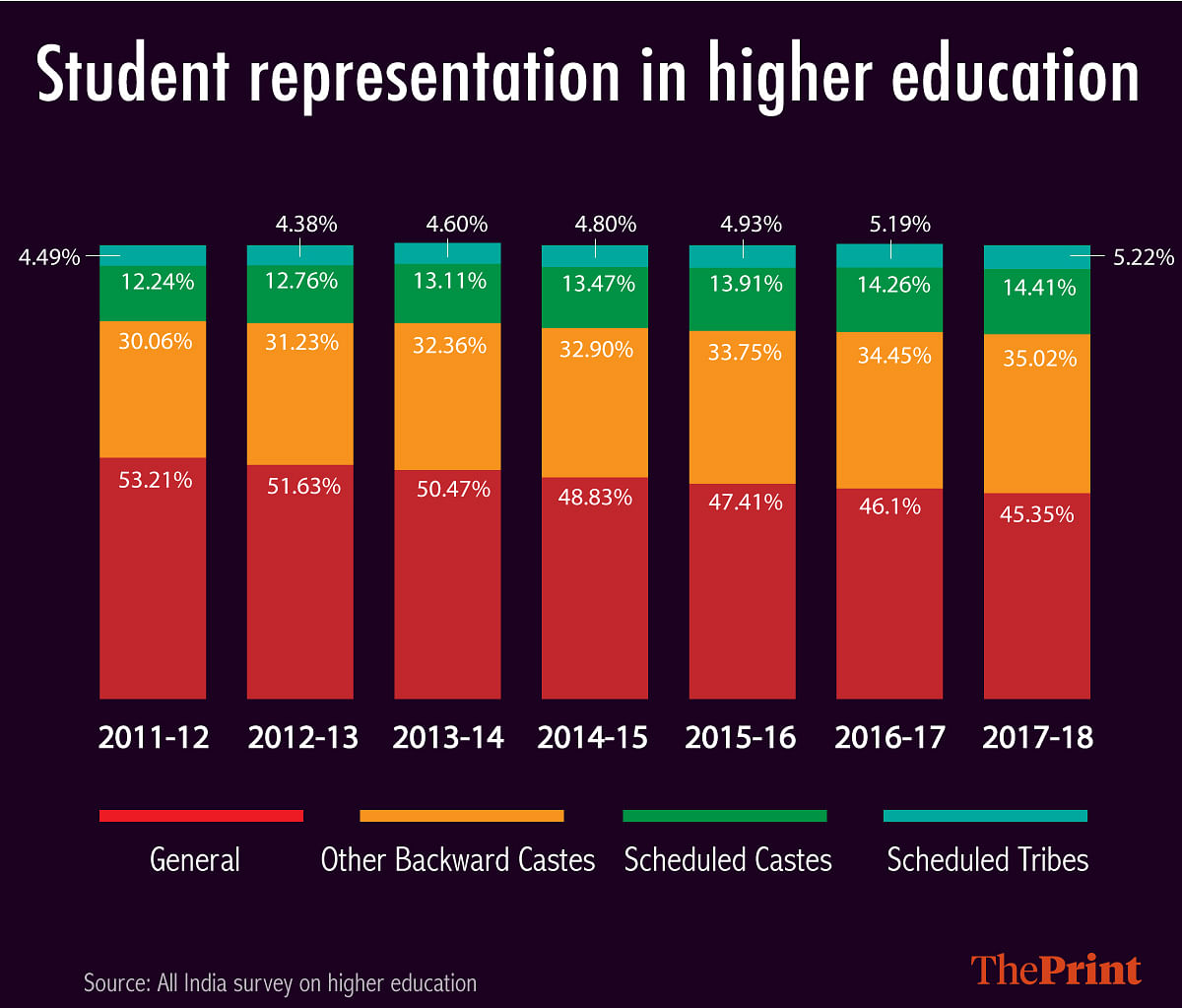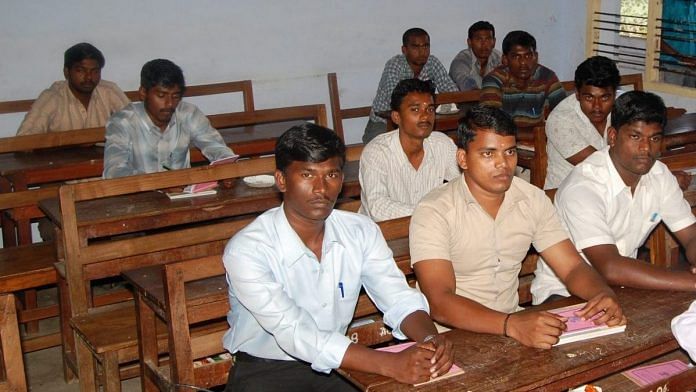As the Centre introduces a 10% quota for ‘poor’ upper castes, data shows that little has been done to improve education enrolment for SCs and STs.
New Delhi: Students from the Scheduled Caste (SC) and Scheduled Tribe (ST) categories are not even as represented as their constitutionally mandated reservation in educational institutions across the country, while those from the Other Backward Castes (OBC) at least fare better than the quota allotted to them.
As the Modi government prepares to implement the 10 per cent reservation for economically weaker sections (EWS) among upper castes, analysis of the data from the All India Survey on Higher Education (AISHE) shows that in the last seven years, enrolment of SC and ST students in higher education did not even touch 22.5 per cent (the allotted quota) in any of the years.
The data shows that between 2011 and 2018, the average enrolment rate for SC students was 13.45 per cent, while it was 4.8 per cent for ST students as against the constitutionally mandated quota of 15 per cent and 7.5 per cent, respectively.
In the case of the SC category, however, the enrolment has been increasing marginally over the years from 12.24 per cent in the 2011-2012 academic session to 14.41 per cent in the 2017-2018 session.
Enrolment rates in the ST category, however, has remained steady and below the reservation mark. In 2011-2012, the 4.49 per cent of students were from the ST category, a number that went up to 5.22 per cent in the 2017-2018 session.
OBC students, however, have fared better than their mandated limit of 27 per cent, data available with the government shows. Their average enrolment rate over the last seven years is 32.82 per cent and rose from 30.06 per cent in 2011-2012 to 35.02 per cent in 2017-2018.
Writer-activist Kancha Ilaiah blamed the numbers on the poor condition of school education in the country. “There is a language problem for students from the SC/ST category,” Ilaiah said. “STs have no school except for people in the northeast region and Dalits also don’t go to good schools.”
Ravinder Kaur, Professor of Sociology at Indian Institute of Technology, Delhi, feels that it is a good sign that enrolment rate has been increasing among Dalit students.
“It’s good news that the representation of SCs is going up over the years but there is still work needed to be done when it comes to STs,” she said. “One of the reasons that STs are not represented properly is because of the lack of education facilities at the school level.”

Also read: Why Modi government’s quota move may not yield the results it wants
General category representation drops
The data also shows that the representation of students from the general category has gone down. While in the 2011-2012 session, the percentage of general category students was over 53 per cent, it has been decreasing gradually and was 45.4 per cent in the 2017-2018 session.
With the new 10 per cent reservation for the economically weaker sections having been passed, the Ministry of Human Resources Development has decided to implement the additional quota in all education institutions from the coming academic session. The number of seats in the institutions is expected to go up by 25 per cent.
Ilaiah, however, feels that the new upper caste quota will still not benefit the poor.
“Since 10 per cent has been given for all castes on an economic basis, those whose children go to English medium schools but have an income of less than 8 lakh will use it,” he said. “The rural agrarian community will not be able to use it. Basically, the community that got admission in the open category will now get admission in this category.”
Kaur too agrees. “When it comes to reservation for the economically weaker section, there is no clarity on how the students would be chosen apart from the income and other criteria mentioned in news reports,” she said. “The government should ideally select the most deserving candidates out of the ones who qualify, otherwise it would become one of those things which end up benefitting only people who are urban educated or privileged in other ways.”
Also read: Five reasons why the BJP’s upper-caste quota gambit could backfire



